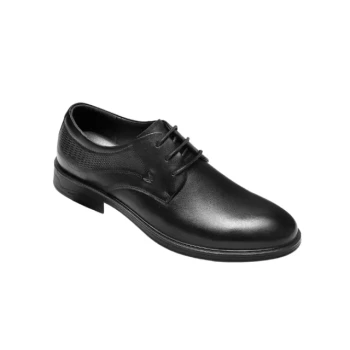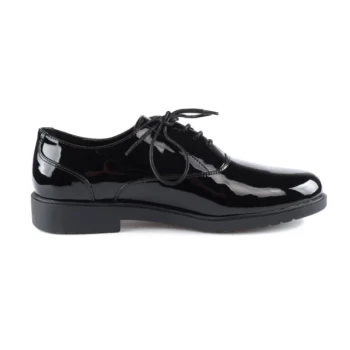In essence, regenerative leather is a direct byproduct of a specific farming philosophy. It is sourced from animals raised on farms practicing regenerative agriculture—a holistic system designed not just to sustain land, but to actively restore and improve its ecological health. This approach focuses on rebuilding soil organic matter and enhancing biodiversity.
The critical difference is the origin story. Regenerative leather shifts the focus from simply creating a material to supporting an agricultural system that aims to heal the environment, improve animal welfare, and create a higher-quality raw material as a result.
The Core Principles of Regenerative Sourcing
To understand regenerative leather, you must first understand the farming practices behind it. It's a fundamental departure from conventional, industrialized livestock farming.
Beyond "Sustainable": Restoring Ecosystems
The term "sustainable" often implies maintaining the current state or doing "less bad." Regenerative, by contrast, is about actively doing "more good" by rebuilding and revitalizing the ecosystem.
This system prioritizes soil health, which helps the land capture more carbon from the atmosphere, improve water retention, and reduce erosion.
Mimicking Natural Grazing Patterns
A cornerstone of this practice is rotational grazing. Livestock are moved frequently across different pastures, mimicking the natural patterns of wild herds.
This prevents overgrazing, gives the land time to recover, and encourages deeper root growth in plants. The animals' manure and hoof action naturally till and fertilize the soil.
A Holistic, Integrated System
Regenerative farms often operate as integrated systems. This means crops and animals work together symbiotically.
Animal waste fertilizes the fields where feed crops may be grown, and crop diversity supports a healthier overall ecosystem for the animals.
Minimizing Chemical Inputs
A key goal is to eliminate or drastically reduce the reliance on synthetic fertilizers, pesticides, and hormones.
By focusing on natural cycles and soil health, the need for these inputs diminishes, protecting local water sources and the delicate microbiology of the soil.
How This Translates to the Final Product
The way an animal is raised has a direct impact on the quality and ethical standing of the leather produced from its hide.
The Claim of Higher Quality
Animals raised in low-stress, open-pasture environments are generally healthier. Proponents argue this results in a stronger, more resilient hide with fewer defects that might arise from confined, industrial conditions.
Ethical Sourcing as a Foundation
In this model, animal welfare and environmental stewardship are inseparable. The ethical claim is rooted in providing animals with a life that aligns with their natural behaviors, grazing freely on diverse landscapes.
Understanding the Trade-offs and Challenges
While the principles are compelling, it's important to approach regenerative leather with a clear understanding of its current market realities.
Scalability and Availability
Regenerative agriculture is not yet the industry standard. Sourcing these hides at a large commercial scale can be challenging, leading to limited availability compared to conventional leather.
The Cost Factor
This method of farming is often more labor-intensive and requires more land per animal than industrial operations. These factors, combined with a smaller supply, can translate to a higher price for the raw material and the final product.
The Lack of Universal Certification
While certifications are emerging, there is no single, globally recognized standard for "regenerative." This can make it difficult for consumers and brands to verify claims and navigate the market with complete confidence.
Making the Right Choice for Your Goal
Choosing regenerative leather depends entirely on your primary objective.
- If your primary focus is environmental impact: Regenerative leather offers a compelling model for sourcing that actively seeks to improve soil health and potentially sequester carbon.
- If your primary focus is animal welfare: The emphasis on open grazing and natural living conditions aligns with the highest standards of ethical treatment.
- If your primary focus is budget and scale: Be prepared for higher costs and potential sourcing challenges compared to conventional leather due to its current market size.
Ultimately, choosing regenerative leather is a commitment to a system that views agriculture as part of the solution for a healthier planet.
Summary Table:
| Aspect | Regenerative Leather | Conventional Leather |
|---|---|---|
| Farming Goal | Restore & improve ecosystem health | Maintain or minimize negative impact |
| Animal Welfare | High; open pasture, natural behaviors | Varies; often confined, industrial scale |
| Environmental Impact | Positive; carbon sequestration, soil health | Often negative; resource-intensive |
| Material Quality | Potentially higher; fewer defects from stress | Standardized, but can have more imperfections |
| Cost & Scalability | Higher cost, limited current availability | Lower cost, widely available |
Source High-Quality, Ethically Produced Footwear with 3515
As a large-scale manufacturer, 3515 produces a comprehensive range of footwear for distributors, brand owners, and bulk clients. We understand the growing demand for materials sourced with environmental and ethical integrity.
Partner with us to develop your next line of boots or shoes. Our production capabilities encompass all types of footwear, and we can guide you in selecting the right materials, including those aligned with regenerative principles, for your market.
Contact our expert team today to discuss your manufacturing needs and how we can bring your vision to life.
Related Products
- Custom OEM Training Shoes Wholesale Manufacturer Durable & Breathable
- Wholesale Comfort Leather Business Shoes with Dial Lacing System
- Safety Footwear Wholesale Manufacturer for Custom OEM/ODM Production
- Durable Leather Safety Boots for Wholesale & Custom OEM Manufacturing
- Wholesale Women's Leather Derby Shoes Custom Factory Production
People Also Ask
- What are the features of non-slip athletic sneakers? The Ultimate Guide to Traction & Performance
- Why is proper boot fastening important? Unlock Maximum Safety and Performance
- What is Athlete's Foot, and how does it spread? Prevent Contagious Fungal Infections
- What improvement in 2-mile run time could be expected with a 10% improvement in running economy from super boots? Achieve a 7.9% to 15.1% Time Improvement
- What are the characteristics of strap-closure work shoes? Speed, Convenience, and Key Trade-offs



















